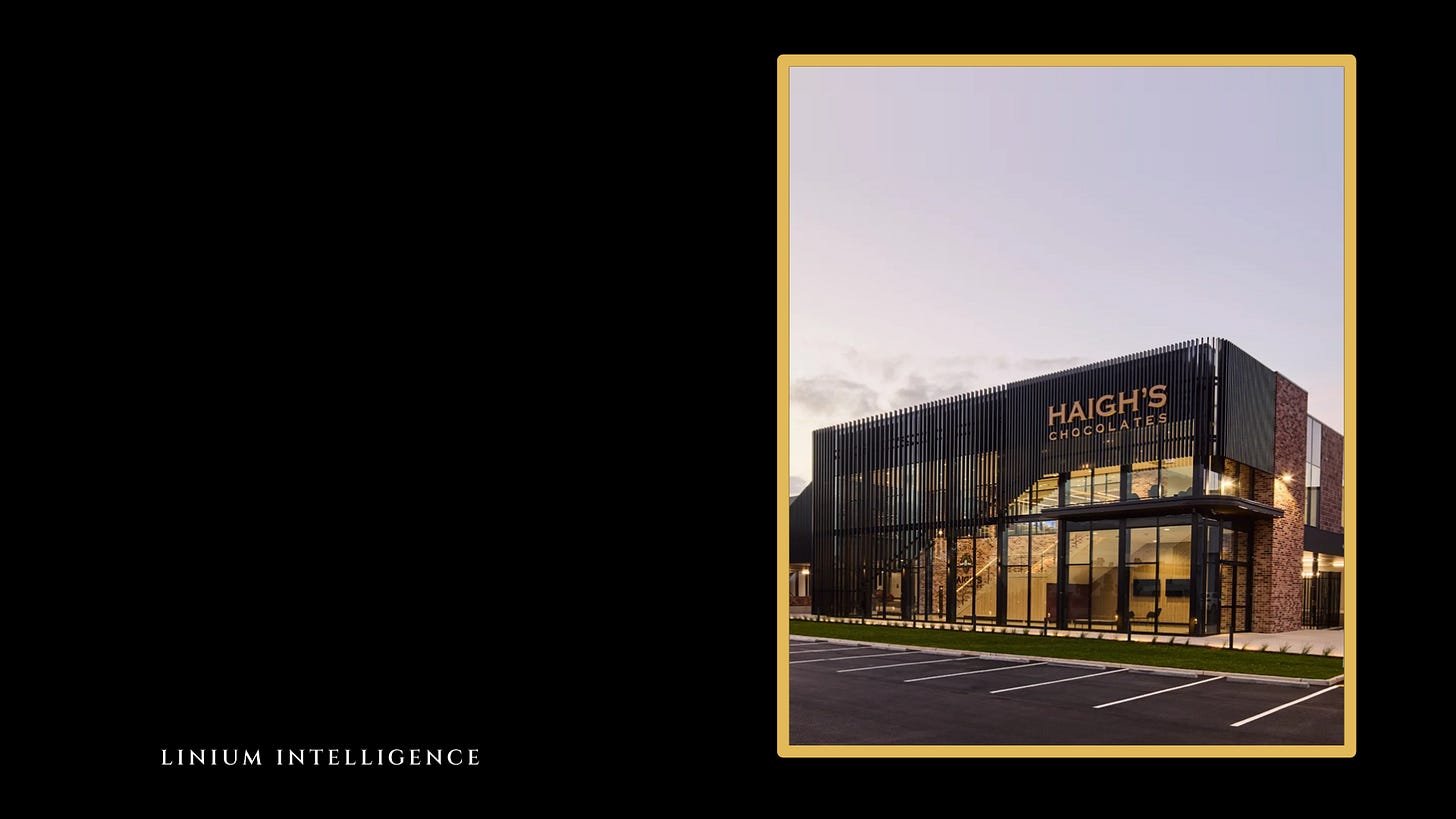Haigh’s Chocolates Opens AUD 120 Million Facility In South Australia To Support Growth
Haigh’s Chocolates has officially opened a new AUD 120 million production, warehouse and online fulfilment facility in Salisbury South, South Australia, marking a significant expansion milestone for the family-owned chocolatier.
The 18,000-square-metre site is designed to underpin the company’s long-term growth strategy, accommodating increased chocolate production and wider distribution. Haigh’s currently produces around 1,100 tonnes of chocolate annually to supply its 22 retail and online stores across the country. The new facility will enable future capacity of up to 2,000 tonnes per year.
The state-of-the-art complex integrates sustainability and efficiency into its operations, powered by 1,180 solar panels and incorporating 1.7 kilometres of chocolate delivery pipes alongside over five kilometres of linear storage. It has been designed to support up to 400 employees, with approximately 100 new roles expected across production, warehousing and fulfilment over the next five years.
Haigh’s also invested AUD 30 million in advanced chocolate-making equipment. New installations include specialised panning, enrobing and moulding lines, as well as upgraded kitchen and packing technology to complement the company’s artisan traditions.
Strengthening Market Position In A Competitive Landscape
This expansion reflects Haigh’s ongoing efforts to strengthen its presence in the Australian premium chocolate market and enhance its direct-to-consumer operations.
Haigh’s Chocolates maintains a leading position in the Australian direct-to-consumer chocolate space, holding the largest share of this channel. The brand’s strategy continues to emphasise heritage craftsmanship, physical store growth, and online expansion, with the new facility enhancing its ability to meet rising demand. Alongside store openings in Sydney and other metropolitan areas, the company has also pursued seasonal collections, such as its Mother’s Day assortments and Pastille Day limited editions, which reinforce its artisan reputation and deepen consumer engagement.
Competitors in the premium space, such as Lindt and Koko Black, have also been active in reinforcing their positions. Lindt has leaned into limited-edition indulgence with recent launches such as its Dubai-style pistachio chocolate, drawing on international and Australian flavor trends in pistachio flavours. Koko Black continues to expand its retail footprint, with a planned new store in Brisbane broadening its geographical presence, while also showcasing handcrafted limited-edition products for occasions like Lunar New Year.
Meanwhile, niche and emerging players like Manuko, Poppy’s Chocolate, and Hunted+Gathered have leaned into seasonal and experimental releases, using novelty and exclusivity as their key differentiators in a crowded market. Manuko, for example, has introduced products centred on organic 70% Peruvian chocolate with flavour pairings such as raspberry, and floral infusions like rose hibiscus, reflecting consumer interest in wellness-driven indulgence. Poppy’s Chocolate has pushed further into the trend of viral-inspired creations, developing pistachio- and knafeh-inspired bars and blocks that take direct inspiration from the viral “Dubai chocolate bar,” while also experimenting with festive offerings such as Easter eggs reimagined as blocks or incorporating tropical fruits like lychee and pineapple. Hunted+Gathered, traditionally known for minimalist, organic chocolate, has entered the seasonal gifting space with Easter assortments, blending artisanal praline fillings with clean, contemporary presentation.
In contrast, larger mainstream players such as Nestlé and Cadbury continue to leverage their scale by driving frequent product launches and optimising supply chain capabilities. Nestlé has introduced flavour extensions across its KitKat, Aero, and Milkybar ranges, with innovations ranging from layered textures like the KitKat Gooey Choc to nostalgic returns such as the Aero Milkybar and Milkybar Crunch Block. These brands balance novelty with recognisable formats, ensuring wide consumer reach. Cadbury, meanwhile, has reinforced its market presence not only through product development but also significant supply chain investment, highlighted by the opening of a new automated distribution centre in Melbourne. This facility consolidates operations, expands storage capacity, and enhances delivery speed, allowing Cadbury to serve market demand more efficiently.

